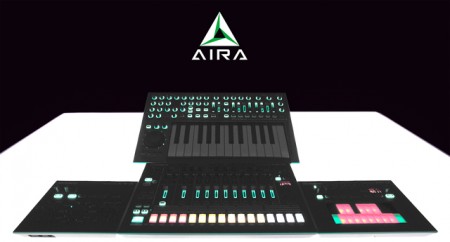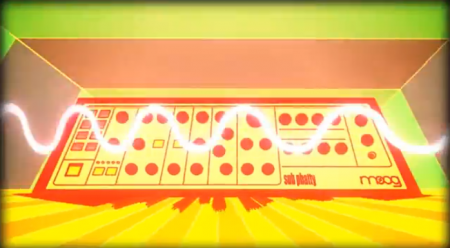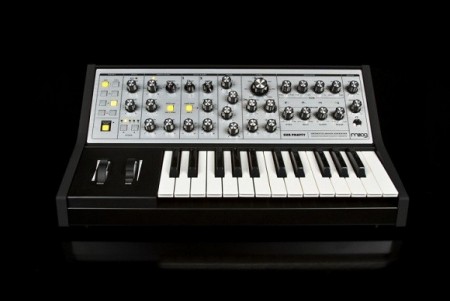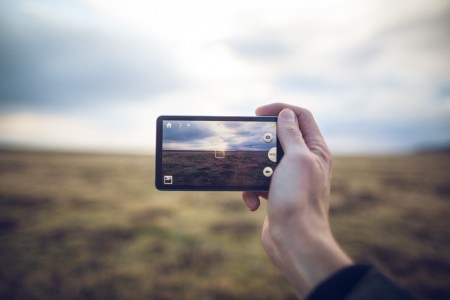Mark Mothersbaugh’s Synth Collection
Check out Hollywood composer and Devo member Mark Mothersbaugh’s synth collection. More on Cool Hunting.
-Chad Kamenshine
Check out Hollywood composer and Devo member Mark Mothersbaugh’s synth collection. More on Cool Hunting.
-Chad Kamenshine
You may remember seeing the first Lytro light field camera here on the blog back in 2011. If its unconventional box-like shape wasn’t enough to catch your eye, the astounding technology that enabled photographers to adjust the focal point of the image after it had already been captured surely would have. Check out an example below, you can click to change the focal point and scroll to zoom in and out. There are more samples on Lytro’s Gallery page.
Well, now Lytro is back with the next evolution of the light field camera: the Lytro Illum. Physically, it appears much more in-line with traditional point-and-shoot cameras than its radical predecessor, with an angled display screen that gives the profile of the camera big points on both character factor and, I’d imagine, ergonomics. I’ve also read in some hands-on reviews that it feels remarkably light, weighing in at less than two pounds…yes, that lens that looks like a cumbersome beast apparently weights only half a pound.
As pretty as the Illum is on the outside, it isn’t until you take a look at what’s inside that you can get a sense for how revolutionary this camera really is. The Illum uses a patented micro-lens array that captures data about color, light direction and intensity, storing this data for later use. This is the key difference between light field cameras and other cameras, which generally don’t give you much control over the photo once it’s been taken. A special Lytro button enables a helpful UI overlay that outlines the contours of objects in the shot, giving a sense of depth and a preview of how the image’s focus will be able to be adjusted by its viewers.
Perhaps the biggest kicker of all is the price tag. Looking at a piece of technology as revolutionary as this, you might instantly assume that it’s going to run tens of thousands of dollars. Wrong. It’s being listed at around $1,599 USD, which isn’t exactly cheap, but in the photography field it actually is very affordable. In his original post, Jon finished it off by opening the table for ideas on how this technology could be applied to great effect. One can’t help but think of all the possibilities when you look at technology like this: how would you use the Lytro Illum differently than you would your usual camera? Or, which of your favorite photographers would you like to see use a camera like this?
You can read more on the Lytro Illum on Engadget and The Verge
Posted by: Alex Koplin via Mani Nilchiani

We finally get a peak in on the AIRA series from Roland. This less than 5 minute video from NAMM 2014 shows all these beautiful new toys (TR-8, VT-3, TB-3, System-1) playing well together. One thing I wish for 2014 is no more beat repeat or scatter or whatever you want to call it, i’m done hearing from laptop performers.
For those people that have been on the fence about buying a modular, I think this is that piece that might put you in buying mode.
Intellijel Designs has introduced a new Eurorack synth module, the Atlantis, inspired by the classic Roland SH-101 synthesizer.
The Atlantis is heavily inspired by the architecture and sound of the Roland SH-101, but offers several enhancements:
Triangle core vcos (with far better tracking and Hard sync) instead of saw core
Primary vco has linear FM (not just exp)
MOD Vco can be linked to the primary VCO pitch CV.
Modulation oscillator switchable from LFO to VCO
Filter is multimode, 2/4pole switchable and has a special LP boost mode
Filter allows for selection of inverted ADSR mod source
Filter tracks 1V/oct
Mixer section includes and external source which is normalled to a sinewave
Filter has built in soft clipping
Envelope has looping option, re-trigger and selectable time range
Output VCA has two stage clipping circuit
External clock input for the S&H
Patch points for every synthesis section
via Synthtopia

It’s not often that get very excited about modern audio equipment but when the name Neve is attached there’s always room for an exception. Rupert Neve Designs (not to be confused with AMS Neve) announced this week at Musikmesse a new desktop console dubbed the 5060. It’s meant to be a sort of studio centerpiece and features a 24×2 mixer with sends and transport control. There are other products out there that do this (the SSL Nucleus for one) but none do it while looking this good (although not quite as good as the original Neve Sidecar). Unfortunately, as is always the case with quality recording equipment, with a MSRP just under $8,000 USD the 5060 is way out of reach for all of us mortals and will most likely exist only in the world of medium to large sized professional studios. I guess I’ll just hold out hope that in 40 years I might find one at a garage sale of some lady who’s “son left it in the attic when he moved” or whatever cliche scenario it seems like everyone acquired their choice vintage gear via.
More info at Neve’s 5060 Page



Adam Fuchs and Flying Lotus team for a psychedelic video to promote Moog’s Sub Phatty. Moog claims that this is their “grittiest Moog synth ever”, they definitely found the right man for the job, this “Such a Square” track refreshes FlyLo sound.
Had a chance to explore in and around Death Valley last week with my new favorite lens, Canon’s 24mm F1.4. Stumbled upon a few ghost towns, countless abandoned mines, including one that a migrant had used as a shelter, and even Charlie Manson’s old getaway truck, still preserved in the one of the driest climates on earth. What’s nice about this particular 24mm prime is how it’s fast as it is wide, which makes it great for shallow depth of field in landscape photos, and a perfect tool for capturing shots indoors, in tight places.
We’ve entered a strange territory in photography, where the software benefits & ubiquity of a mobile operating system like Android, meet the hardware of a decent point and shoot. I’ve been testing the Samsung Galaxy Camera for the last month, so I figured I’d share a few thoughts.
A smart camera.
This is, first and foremost, a large point and shoot camera. As camera software goes, Android 4.1 Jelly Bean is a breath of fresh air. This is a huge win over any custom OS that attempts to reinvent the wheel. You can install any app available in the Google Play store, from Instagram to games to Wifi-tethering apps. The touchscreen is also amazing. It’s huge. With the camera app open, it makes every type of photo easy to see, frame & capture.

For a phone-less camera, it’s super connected.
Because it comes with GPS, Wifi & 3G connectivity, it makes sharing your photos while you’re on the road really easy. In fact, I’d call it a potential lifesaver. You can set it up to auto-upload to Dropbox or Google+, so if you lose your camera, you’ll still have your photos. Or you can use it to Skype the Icelandic police when you lock yourself out of your car at dusk, in a sand storm, in the middle of nowhere. True story.
Optical zoom is great. Photo quality is so-so.
At 16 megapixels, it outputs photos larger than what phones currently can, yes, but are they better? Not entirely. The lens and 21x optical zoom give you more versatility than a smartphone, but if you examine the photos below closely, you’ll see some JPEG compression and color fringing. For $500 bucks, it’s certainly not as good as you’d find in another equally priced point and shoot camera.
Photo editing software on Android is scarce.
The camera comes pre-installed with the Photo Wizard editing app, which is sufficient for some, but you’ll probably want to install PicsPlay Pro if you want more control & full resolution exports. It’s the best Android photo editor I can find.
Awkward to hold when you type.
You’ll be using the touchscreen keyboard just as much as you would when operating your standard Android phone, which means you’ll want to hold the screen like a phone, which also means you’ll be holding a camera in a way it wasn’t meant to be held – lens to palm. Not ideal. Thankfully this one has an automatic lens cover.
A note for heavy Instagram users…
The zoom lens opens and extends every time you activate the camera, so if you’re indecisive like me when choosing a photo to post to Instagram, you’ll find the camera opens and closes repeatedly. One of those nobody saw it coming kind of things.
Overall
There are some usability & quality issues between hardware and software that need figuring out, but the Galaxy Camera is pretty killer considering all you can do with it (hat tip to Android). It’s more camera than smartphone, but when you consider portability, smartphones may still win in the end once smaller, mobile sensors catch up in quality.